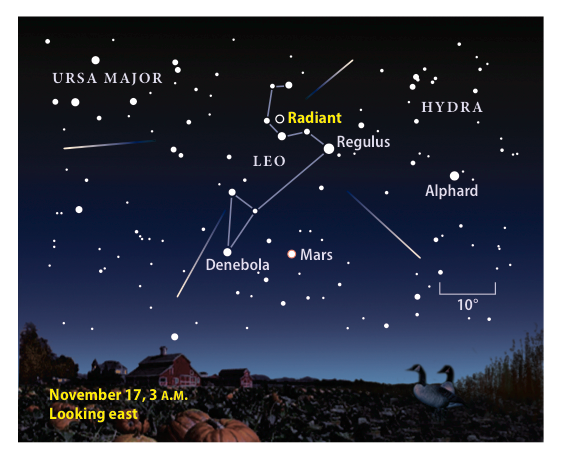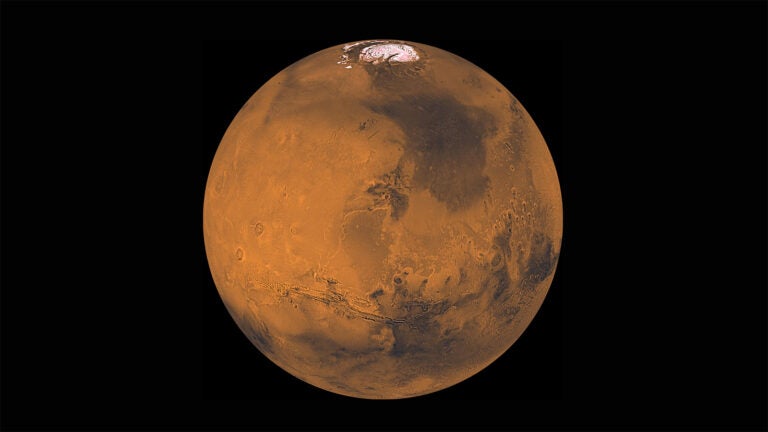Although the Full Moon that occurs on the same day as the Leonids’ peak — November 17 — will diminish the view, 15 meteors per hour still will radiate from the constellation Leo the Lion.
The Leonid meteor shower will produce streaks of light emanating from the constellation Leo the Lion this fall. This annual shower is active November 6–30 and peaks November 17 when up to 15 meteors per hour are visible.
Unfortunately, the Moon becomes Full the morning of the Leonids’ peak. During this phase, it rises around sunset and sets near dawn, so its light will drown out many “shooting stars.”
“Your best bet is to observe in the hour before dawn,” said Astronomy magazine Senior Editor Richard Talcott. “If you can, locate yourself so that trees or buildings block the setting Moon.”
Observers may have luck seeing bright fireballs, though, as Leonid meteors hit Earth’s atmosphere at 44 miles per second (71 kilometers per second) and are likely to produce such brilliant streaks.
Meteors appear because motes of fast-moving dust collide with Earth’s atmosphere. The friction between these tiny particles and the atmosphere causes the dust to vaporize and leave a trail of light in the sky. Meteor showers occur when Earth’ passes through a comet’s stream of debris — discarded dust that traces the comet’s orbit.
The Leonid meteors appear to radiate from a point within the constellation Leo the Lion, which is adjacent to the more familiar Ursa Major, where the Big Dipper lives. To see the most meteors, though, don’t look directly at the radiant — turn your eyes 1/3 of the way across the sky.
Bundle up before you go outside, and consider taking some hot coffee or hot chocolate with you to ensure your early-morning alertness to those streaks in the sky.
Fast facts:
- Annually, the Leonid meteor shower deposits 12–13 tons of material across the planet.
- The Leonid shower occurs because Earth is passing through Comet 55P/Tempel-Tuttle’s stream of debris.











